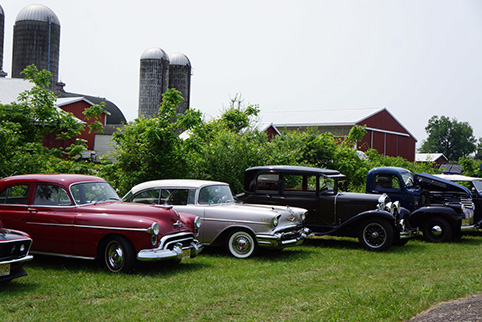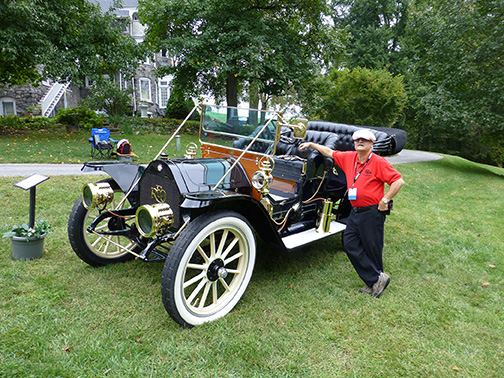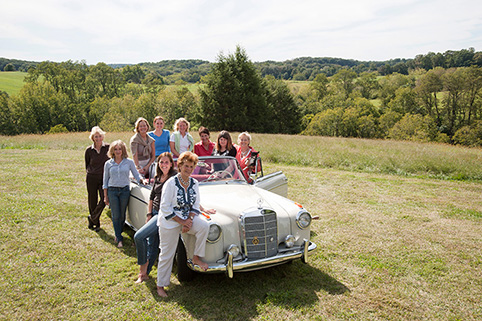
CAR RALLY. PHOTO SHARED BY RICHARD REINA
By Richard Reina
You’re surrounded by it: Every Friday night, the local shopping mall has its “Cruise Night.” While taking a leisurely Saturday drive, you see a line of shiny sports cars headed the other direction. One Sunday morning a month, the local diner hosts a “cars and coffee.” In every case, there are men, women, retirees, young adults, dads, and moms with kids, all chatting, smiling, and enjoying each other’s company. You’re exposed at home, too. You can’t escape the auto restoration shows or car auctions on TV.
What’s going on? The answer is simple: You’ve been witnessing the explosion of the collector car hobby in this country. Although the hobby can be enjoyed by those at all different ages and income levels, those who are “actively retired” may be better able to take part in it because of their greater disposable income and extra free time.
Perhaps your interest is piqued enough that you want to join the hobby. But the first, and biggest, obstacle is that you know practically nothing about old cars. So, how do you start without becoming frozen with the fear of making the wrong decision or getting ripped off? Follow the five steps outlined below.

955 CHEVY CORVETTE ROADSTER. PHOTO: THE HENRY FORD MUSEUM
1. Make the Commitment But Budget for It
Getting into this hobby requires more than money to purchase a car. Entry-level, operable collector cars can be purchased for a little as $5,000, but you’ll also need:
• Garage space. Don’t even consider leaving a collector car outside! • Insurance. Collector car insurance is available at reduced rates. • Money set aside for maintenance and repairs. No matter how much you spend on the initial purchase, there will be additional expenses. Just be prepared to include that in your budgeting.
2. Buy the Love Affair, Not the Investment
You may have heard stories like, “I bought this car for $400 and sold it for $10,000!” If you watch the auctions, you may hear. “Five years ago, these could be bought all day long for $25,000, and now, you can’t touch them for under $100,000!”
It’s possible, even likely, to make a profit from old cars.
But please don’t let that be the primary factor. It’s a hobby.
If you select a car because someone told you that its value will increase but you don’t like the car, you will never enjoy it. Rather, chase what turns you on.
Never had a convertible? Look for one. Always wanted a European sports car? Aim for that. Missed your chance to buy American muscle when you were young? Now you can.
When it’s time to sell, be thankful if you break even, and if you make a small profit, all the better. But the hobby is much more enjoyable and fulfilling with a car you love. Trust me!

PHOTO COURTESY OF MARSHAL STEAM MUSEUM AT AUBURN HEIGHTS, YORKLYN, DELAWARE
3. Join a Car Club—for the Education
Join a car club even before you make a purchase. Why? You’ll gain invaluable insight into various models, avail yourself of technical support, learn about club activities, and enjoy the camaraderie of fellow enthusiasts. They may know of cars for sale or could accompany you to check one out.
Most hobbyists, in fact, belong to more than one club—a marque-specific club (like the Mustang Club) and a general interest club (like the Antique Automobile Club of America). Clubs have modest annual dues, publish a newsletter, and hold regular meetings. Learn all you can before you make a purchase.
4. Decide on a Level of Participation
How you plan to use the car is another important consideration. For some, a big convertible to cruise to get ice cream with the grandkids is all they need. Others want a “show car” to do nothing but collect trophies. Such cars are almost never driven on the street in an effort to maintain their pristine condition, which means further investments in a tow vehicle and trailer.
Then there are those who want the opposite: tours, rallies, and track events get their blood going, as long as they’re behind the wheel piling on the miles. Whatever you decide, know this answer before you shop.

AMY MCKENNA WITH HER DOG, CLASSIC CAR AND FRIENDS. PHOTO: BETH HARPHAM.
5. Find Your Dream Car
How do you find your car, and how do you make sure the car is what the owner claims it is? See No. 3 above and seek club support. You can also attend a cruise night and strike up a conversation with an owner of a car similar to what interests you.
With the internet, there’s a lot to read online to further your education. Websites like hemmings.com consist almost exclusively of collector cars for sale, which can be sorted by location, price, year, and model.
When you’re ready to check things out in person, bring a seasoned hobbyist along with you if you can. Many club members are happy to assist with checking out a car. It’s also worthwhile to pay for a PPI (prepurchase inspection). The $100 to $250 is money well-spent, to make sure you’re going into the classic car hobby with a complete understanding of what a car needs and doesn’t need.
Once the collector car of your dreams is in your garage, use it! After all, that’s what you bought it for. Keep learning, and someday, you may be able to assist someone who wants to get into the hobby.
Richard Reina is the product training director at CARiD.com and a classic car enthusiast. He currently owns and shows a 1967 Alfa Romeo.













